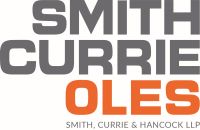To Federal Regulatory Challenges as it Rules On Loper Bright and Corner Post Prior to Adjourning for the Summer
A duo of decisions issued by the U.S. Supreme Court over just the course of one week has changed the legal landscape for federal agencies and will likely result in a flood of litigation challenging federal regulations.
On June 28, 2024, the Supreme Court expressly overruled Chevron USA Inc. v. Natural Resources Defense Council, Inc., 467 U.S. 837 (1984) with a 6-3 ruling in the consolidated cases of Loper Bright Enterprises v. Raimondo, (No. 22-451) and Relentless, Inc. v. Department of Commerce, (No. 22-1219) (“Loper Brightâ€). This decision ends four decades of Chevron deference, the doctrine requiring courts to defer to an agency’s interpretation of vague portions of the agency’s governing statutes, even when a reviewing court interprets the statute differently. With the Supreme Court’s decision in Loper Bright, courts will now exercise independent judgment over statutory interpretation that, under Chevron, belonged to an agency’s subject matter experts.
The Supreme Court did not stop there. On July 1, 2024, with another 6-3 ruling, it issued a decision in Corner Post, Inc. v. Board of Governors of the Federal Reserve System (No. 22-451) (“Corner Postâ€), holding that the six-year statute of limitations for a facial claim under the Administrative Procedure Act (“APAâ€) does not start running until the plaintiff is injured by a final agency action. In other words, under Corner Post, administrative agencies can be sued under a somewhat indefinite timeline after final agency rules take effect.
Goodbye To Chevron Deference
Chevron deference protected an agency’s interpretation of its governing statutes against legal challenges as long as the agency’s position was reasonable and otherwise not unlawful. A court could generally not overrule an agency’s interpretation of its governing statute. The practical effect was that challenges to an agency’s actions could be deflected on the basis of how the agency, rather than the court, interpreted the statute.
The Loper Bright decision, which abolishes this added layer of protection to agency action, does not prohibit courts from considering an agency’s interpretation of an ambiguous statute, but rather, eliminates the requirement to defer to that interpretation. Agency interpretation remains “a body of experience and informed judgment to which courts and litigants may properly resort for guidance.â€[1] However, Loper Bright enables the courts to create reasonable interpretations of the statute in question by “us[ing] every tool at their disposal to determine the best reading of the statute and resolve the ambiguity.â€[2] The Court relied on the plain language of the APA, explaining, “Courts must exercise their independent judgment in deciding whether an agency has acted within its statutory authority, as the APA requires.â€[3]
The majority was not persuaded by the argument that agencies have subject matter expertise that the courts lack. The Court opined that technical expertise in an agency’s regulatory sphere does not equate to the technical experience of interpreting vague statutes. “Congress expects courts to handle technical statutory questions.â€[4] The Court explained that if Congress wants to award discretionary statutory interpretation authority to agencies, it may do so. This suggests that Congress may face more pressure to clearly and definitively articulate agency authority in the coming weeks, months, and years ahead.
The majority decision seeks to prevent upheaval amongst the thousands of cases that have relied on Chevron by making explicit that the new decision will only impact new cases. The Court emphasized that “[m]ere reliance on Chevron†is not justification to overrule such prior cases.[5] However, this does not detract from the fact that overturning Chevron carries significant implications for federally regulated entities.
Eliminating Time Limits for Facially Challenging Federal Regulations
A plaintiff challenging the content of a federal regulation – known as a facial challenge –must do so “within six years after the right of action first accrues.â€[6] Before Corner Post, courts understood that the six-year statute of limitations for a facial challenge to an agency regulation began running when an agency published the final rule. Corner Post upended that long-held understanding.
The Court in Corner Post stated that a right of action accrues when a plaintiff can “file suit and obtain relief,†and thus held that “[a]n APA plaintiff does not have a complete and present cause of action until she suffers an injury from final agency action, so the statute of limitations does not begin to run until she is injured.â€[7] In other words, an injury resulting from an agency regulation may occur more than six years after its publication.
The Court explained that if the six-year limitation starts when the regulation is published, “only those fortunate enough to suffer an injury within six years of a rule’s promulgation may bring an APA suit. Everyone else – no matter how serious the injury or how illegal the rule – has no recourse.â€[8] Corner Post shakes up the old standard, allowing apparently unlimited facial challenges to regulations as long as the plaintiff has been injured within six years. Corner Post measures the six-year period from the date the injury occurred and not when the final rule was published.
Corner Post does not call for open season on federal regulations, as a legal harm still must have been suffered, giving reason to challenge the regulation. However, the decision does not address whether any regulation will ever be safe from a facial challenge. To the extent Congress feels this interpretation of an expanded statute of limitations “is a poor fit for modern APA litigation,†the Court reiterated that Congress can “enact a distinct statute of limitations for the APA.â€[9]
The “Tsunami†of Litigation to Follow
Justice Jackson articulated in her Corner Post dissent that a “tsunami of lawsuits†would be coming on the heels of Loper Bright and Corner Post.[10]
Under Loper Bright, Plaintiffs who feel that federal agencies have long been overstepping the bounds of their statutory authority will be lining up to voice their complaints. In fact, with the support of Loper Bright behind them, whenever a plaintiff believes a federal agency is acting beyond the bounds of statutory language, there lies a valid basis to challenge the interpretation (and actions) of a federal agency.
Under Corner Post, every federal regulation will remain open to suit from any entity newly subject to that rule. By way of example, if an agency rule that was finalized in 2000 were to allegedly “injure†an entity formed in 2022, the entity has until 2028 to challenge the two-decade old regulation. Thus, as new entities are established, older federal regulations will continue to be challenged.
Loper Bright and Corner Post thereby enable litigants to challenge federal regulations that up until this point may have been considered untouchable.
Other Impacts
Alongside the Loper Bright and Corner Post decisions, the way that federal agencies approach rulemaking and the way in which those rules are litigated under the APA will surely change.
More cautious rulemaking is likely on the horizon. Federal agencies have lost the added protection that Chevron once offered, and their decision-making will bear the brunt of successful new challenges. This means agencies that base new regulations on unique interpretations of a governing statute will be preparing for battle, with doors wide open for litigants to challenge these interpretations. It also means that, without a Chevron shield to deter opponents, agencies may be slower to create new rules and regulations.
As for Corner Post, long-standing agency regulations, which were once thought to be impenetrable six years after the implementation of the regulations, will now be subject to scrutiny for the foreseeable future. In other words, areas of administrative law that were once closed are now fair game for challenge by newly created entities. This development begs the question, will any federal regulation ever become immune to facial challenge?
Only time will tell how far and wide the impacts of the Loper Bright and Corner Post decisions span, but two things are certain: the protection Chevron once afforded federal agencies is gone and the timeframe in which plaintiffs can challenge agency action has been expanded. With these two developments coming only days apart, the floodgates for challenging existing and future regulations are wide open.
[1] Opinion of the Court, Loper Bright, p. 16.
[2]Â See id., p. 23.
[3]Â See id., p. 35.
[4]Â See id., p. 24.
[5] See id., p. 34.
[6] 28 U.S.C. § 2401(a).
[7] Opinion of the Court, Corner Post, p. 6.
[8] See id., p. 22.
[9] See id., p. 23.
[10] J. Jackson Dissent, Corner Post, p. 23.
Associate




